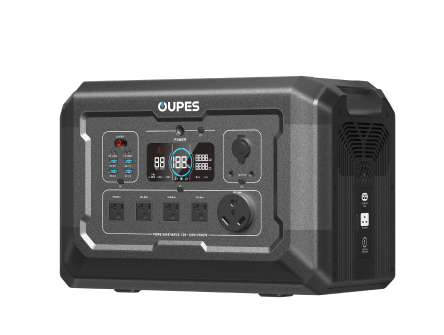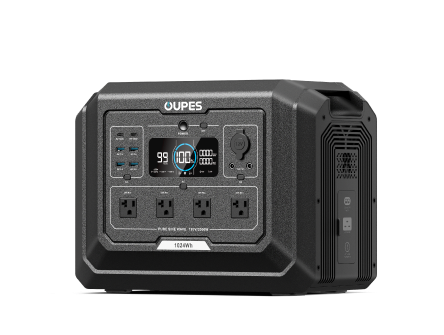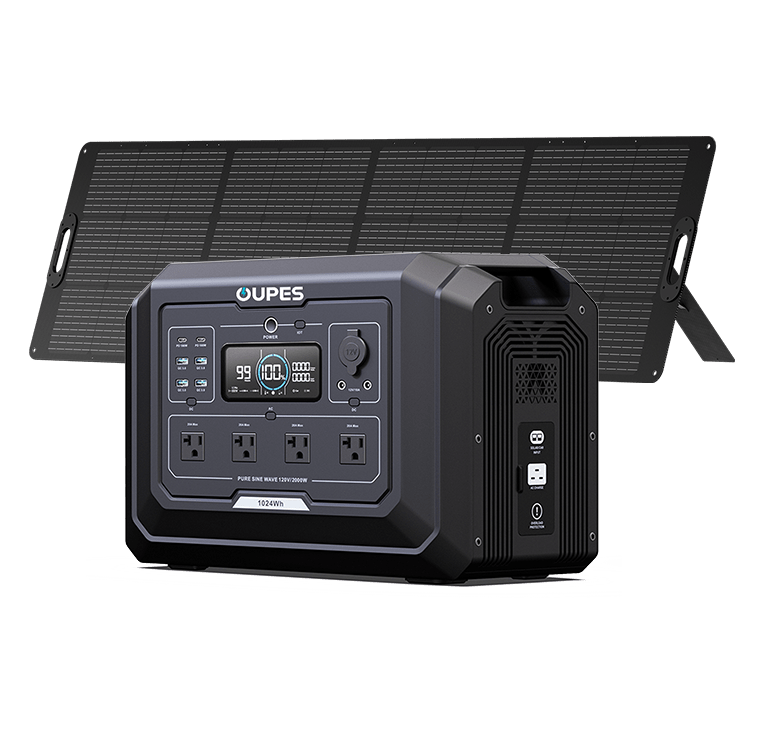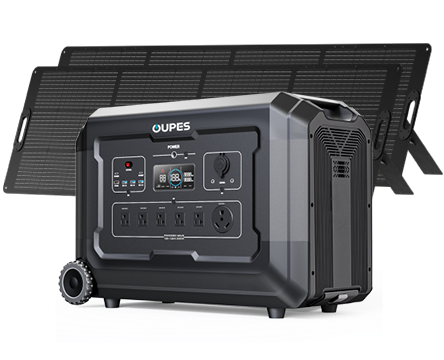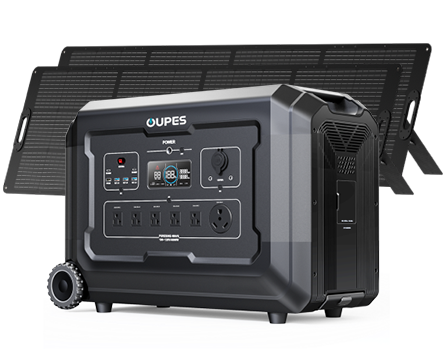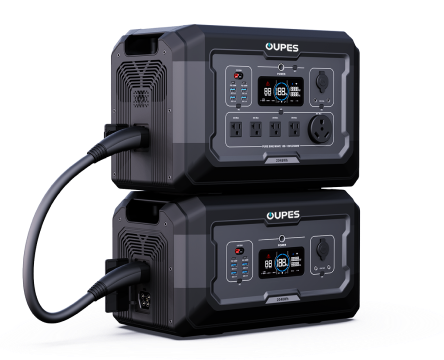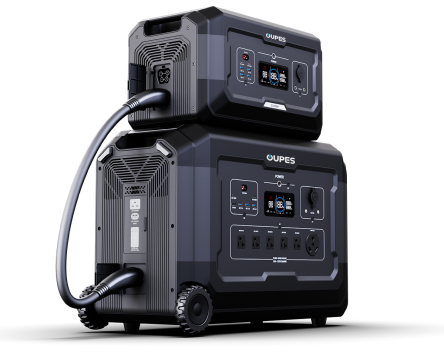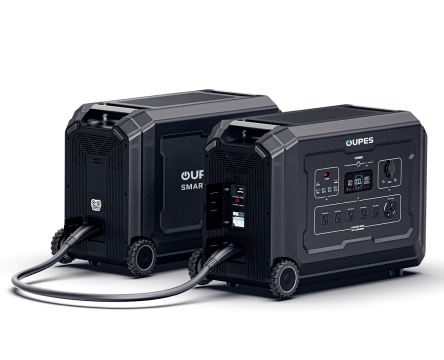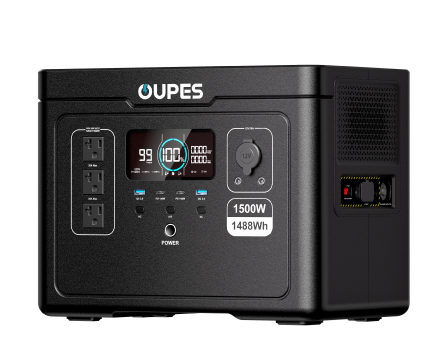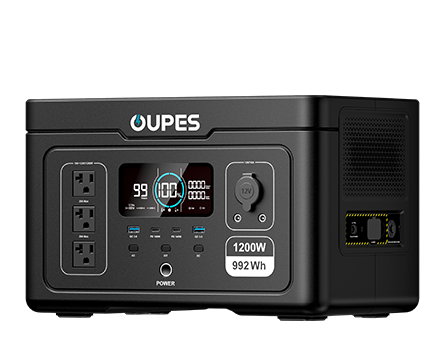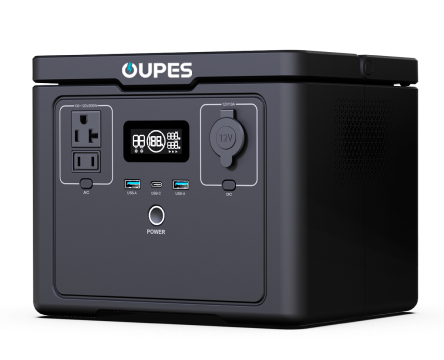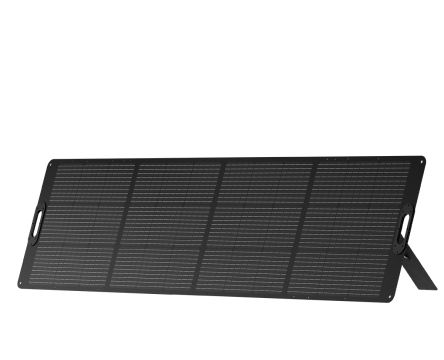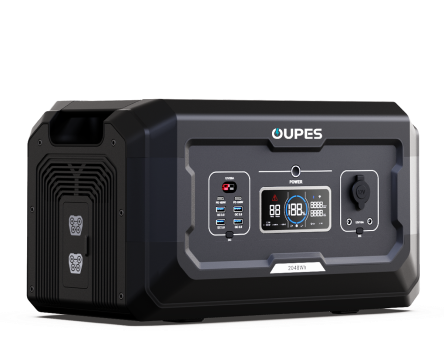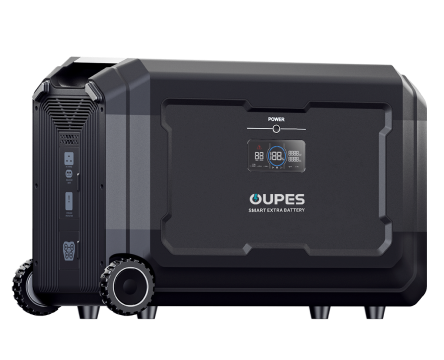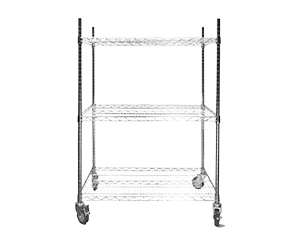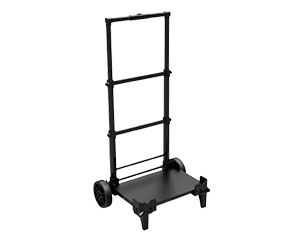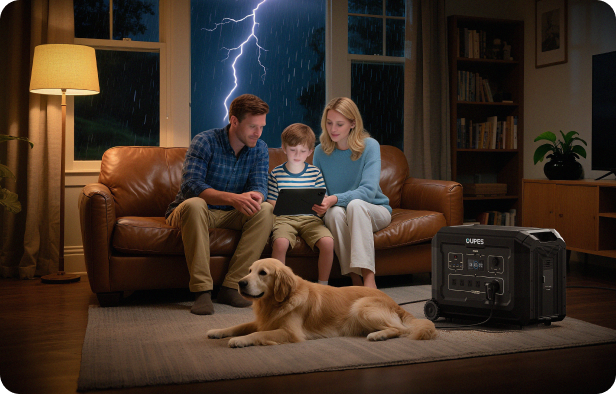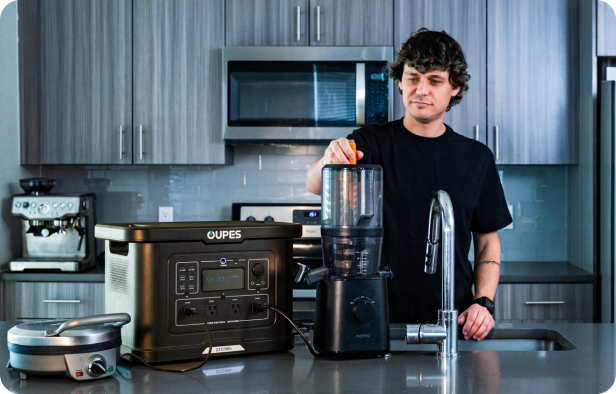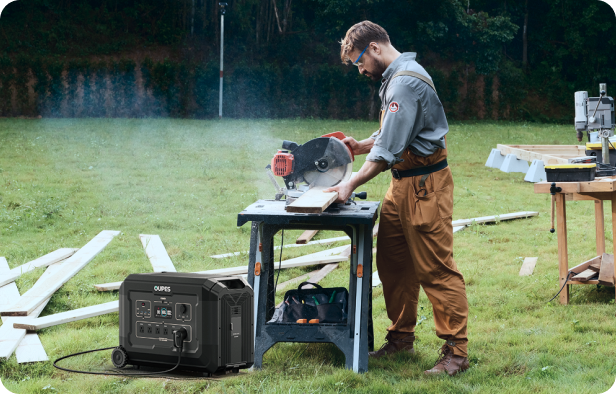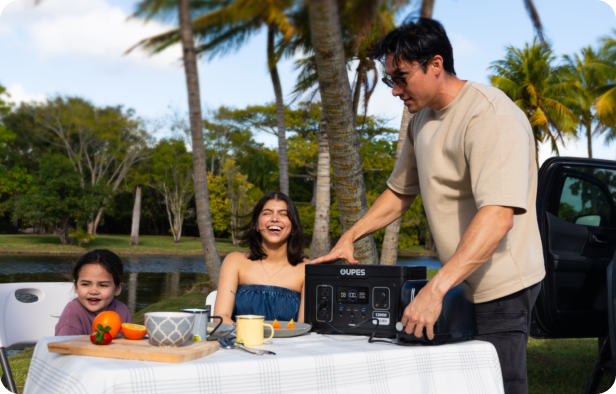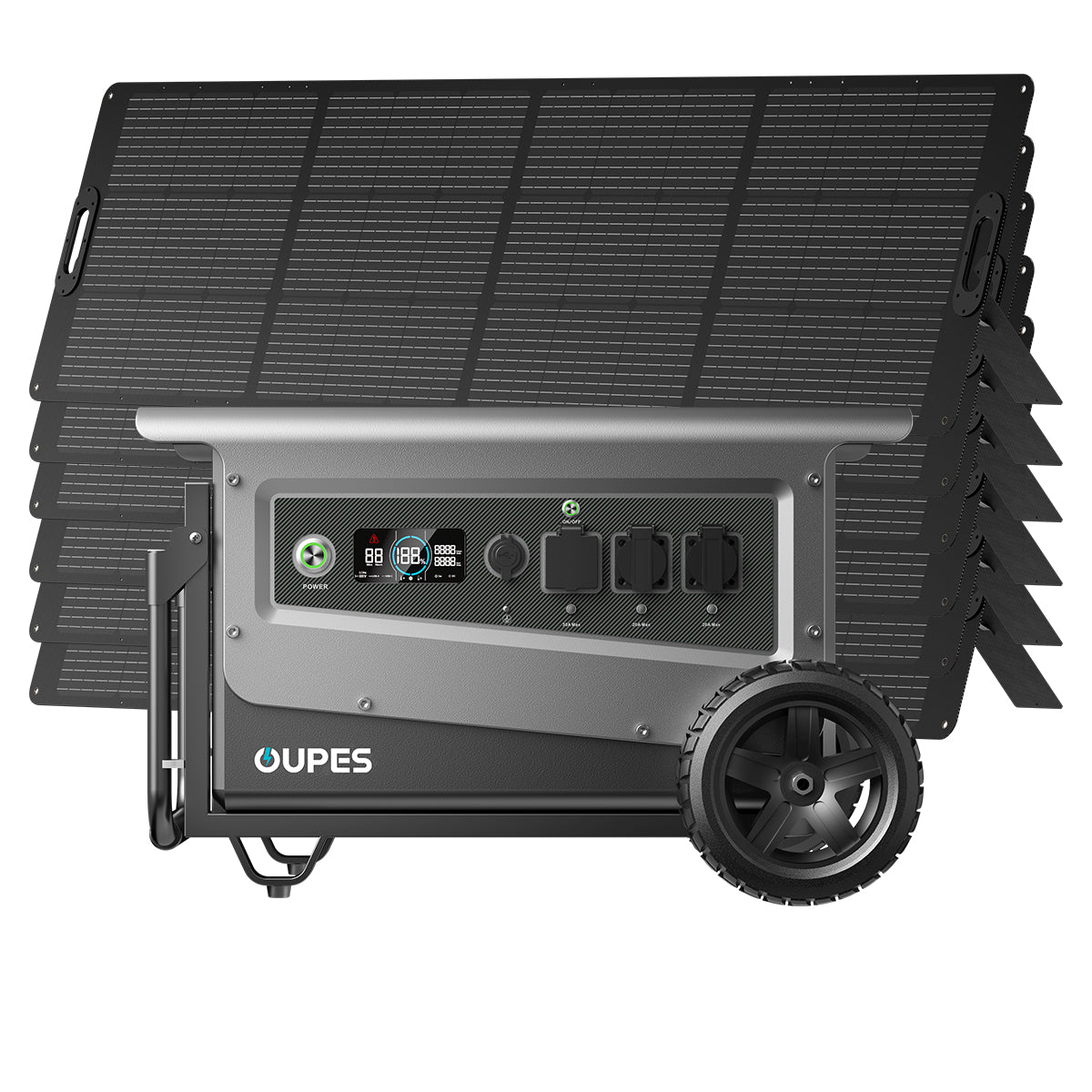
As the days get shorter and the temperatures drop, many people may think that solar panels are less effective during winter. However, winter weather presents unique opportunities to make the most of solar power, even in colder climates. With the right approach, you can harness the full potential of solar panels during winter and keep your energy-efficient systems running smoothly. In this article, we will explore practical tips and insights on how to maximize the performance of your solar panels in winter, and how OUPES products can help you achieve your off-grid power goals.
Understanding Solar Panel Efficiency in Winter
One of the most common misconceptions about solar panels is that they don't work in winter, but this is far from true. While it's true that solar panels rely on sunlight to generate electricity, they can still be highly effective during the winter months. The efficiency of solar panels depends on several factors, including the angle of the sun, the amount of daylight, and the weather conditions. In fact, cold temperatures can actually improve solar panel efficiency, as long as there is adequate sunlight.
During winter, solar panels may receive less direct sunlight due to shorter days and cloudy skies. However, there are still opportunities to capture sunlight during the day, especially if you live in areas with fewer cloudy days or if you strategically position your panels. Even on overcast days, solar panels can produce electricity because they still capture diffused light. To maximize their efficiency, it’s crucial to ensure that your panels are clean and free from snow or debris, as obstructions can prevent sunlight from reaching the panels.
Additionally, while winter days are shorter, they tend to have clearer skies and lower temperatures, which can improve the overall performance of your solar panels. Cold temperatures help solar panels operate more efficiently because they prevent overheating, a common issue during warmer months. This means that although there is less sunlight in winter, the panels are often able to generate power more effectively under the right conditions. To ensure your system performs optimally, consider using a high-capacity solar generator, such as the OUPES Mega 2 Power Station with 2500W and 2048Wh, which can store enough power for extended periods even in winter.
Maximizing Solar Exposure and Placement
To make the most of solar panels in winter, proper placement and positioning are key factors to consider. During the colder months, the sun’s angle in the sky changes, so it’s important to adjust the angle of your panels to capture the maximum amount of sunlight. Typically, the sun is lower in the sky during winter, so tilt your panels at a steeper angle to ensure that they receive more direct sunlight. This is particularly important for fixed systems where the angle cannot be adjusted automatically.
If you have a roof-mounted solar system, make sure that there is no shading caused by surrounding trees or buildings. Shading can significantly reduce the efficiency of your solar panels, especially in winter when the sun is already weaker. If there is snow accumulation on your roof, it’s essential to remove it from your solar panels to prevent any obstructions that could block sunlight. Snow can accumulate quickly, so check your panels regularly to ensure that they remain clear and functional.
Another important consideration is the temperature of the panels. Solar panels should be placed in areas where they can benefit from good airflow, as this helps prevent overheating and allows for better cooling during operation. In winter, cooling is not as much of a concern, but ensuring that your panels have enough space to avoid frost buildup can help maintain efficiency. If you live in a location that experiences heavy snowfall, it might be beneficial to use solar panel covers or heating strips designed to prevent snow buildup. These accessories can help ensure that your system stays efficient even during snowy weather.
Choosing the Right Solar Battery Storage for Winter Use
One of the key challenges in winter solar power usage is storing energy for use when sunlight is limited. Solar panels may not produce as much electricity during the shorter, cloudier days of winter, and the energy storage system you use plays a significant role in how effectively you can manage your energy needs. Choosing the right solar battery is crucial to ensure that you have a reliable source of power when you need it most.
When selecting a solar battery for winter use, it’s important to choose one with sufficient capacity to store energy for multiple days of use. A solar battery with a higher capacity, such as the OUPES Mega 3 Home Backup & Portable Power Station with 3600W and 3072Wh, can help store more energy to power your home or devices during periods of low sunlight. Larger batteries offer greater flexibility, allowing you to store energy during sunny periods and use it when solar power production is lower.
In addition to capacity, consider the battery’s charging and discharging efficiency. Cold temperatures can impact the efficiency of lithium-ion batteries, reducing their ability to charge and discharge properly. Many modern solar batteries, including OUPES products, are designed to operate well in colder temperatures, but it’s still a good idea to monitor the performance of your system during the winter months. Ensure that your battery storage system is placed in a location that is protected from extreme cold, as prolonged exposure to freezing temperatures could damage the battery or reduce its lifespan.
Utilizing Solar Power for Off-Grid Applications in Winter
Winter is a great time to consider off-grid living, as solar power offers a reliable and sustainable energy source for homes or cabins in remote areas. By using solar panels and batteries, you can create a self-sufficient power system that allows you to stay comfortable and powered up during the coldest months of the year. Whether you’re looking to power your lights, heating system, or appliances, solar power can provide an efficient and environmentally friendly solution.
If you are living off-grid or need backup power in winter, it’s important to choose a solar generator that is capable of handling the power demands of your home or cabin. The OUPES Titan 5 Portable Power Station, with 4000W and 5040Wh, is a great option for those who need to power multiple devices simultaneously. This powerful system can easily handle the energy requirements of refrigerators, heating systems, and lights, providing reliable power even during winter storms or cloudy days. The OUPES Titan 3 Power Station, with 3600W and 3072Wh, is another excellent option for those with slightly lower power needs but still requiring a robust off-grid energy solution.
By investing in a high-capacity solar generator, you can ensure that you are well-prepared for winter power outages and can maintain a comfortable and energy-efficient living environment. Off-grid solar systems can also help reduce reliance on fossil fuels and minimize your carbon footprint, making them an ideal choice for those looking to embrace a more sustainable lifestyle.
Maintaining Your Solar System During Winter
Proper maintenance is essential to ensure that your solar system continues to operate efficiently throughout the winter months. In addition to ensuring that your panels are free from snow and debris, it’s important to perform regular checks to make sure everything is functioning properly. Winter weather can be harsh, and components like wiring, connectors, and inverters may be exposed to freezing temperatures, so it’s important to monitor the system for any signs of damage or wear.
First, check the integrity of the panels and their wiring. If you notice any cracks, frayed wires, or exposed connections, it’s important to address these issues promptly to prevent further damage. Inspect the battery storage system to ensure that it is not exposed to extreme cold and that it’s charging and discharging properly. If you live in an area that experiences frequent snowstorms, consider investing in snow guard equipment or heating strips to prevent the accumulation of snow on your panels.
Another key aspect of maintaining your solar system during winter is monitoring the overall energy production. With shorter daylight hours and unpredictable weather, it’s essential to track how much energy your system is producing and adjust your usage habits accordingly. By using a solar power station like the OUPES Mega 1 Home Backup & Portable Power Station, you can monitor real-time energy data and make adjustments to ensure that you are getting the most out of your solar system during the winter months.
In conclusion, winter doesn’t have to mean the end of effective solar power usage. With the right approach to placement, energy storage, and system maintenance, you can ensure that your solar panels continue to perform efficiently throughout the season. OUPES products, such as the Mega 3 and Titan 5 Power Stations, offer reliable power solutions to keep your home running smoothly, even when the weather turns cold. By taking the necessary steps to optimize your solar system for winter, you can enjoy the benefits of renewable energy year-round and reduce your reliance on traditional power sources.

